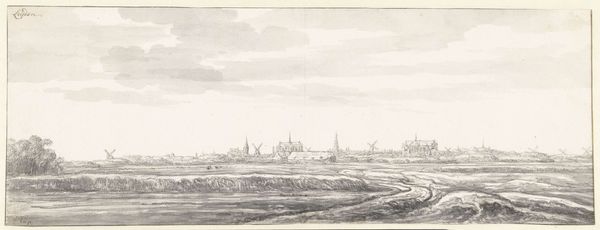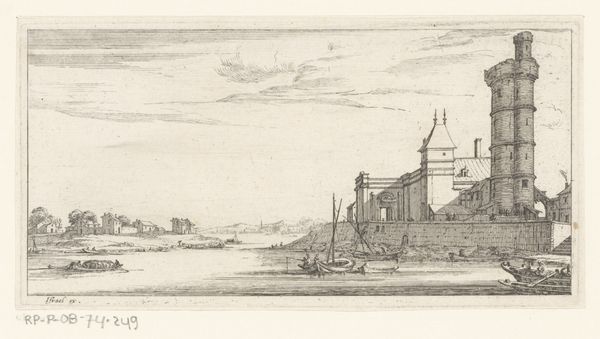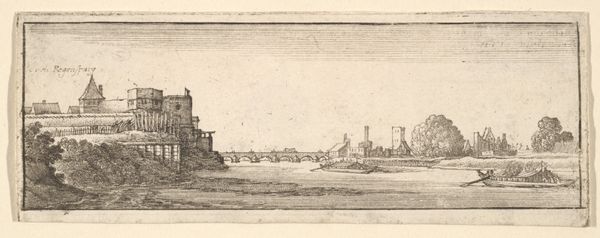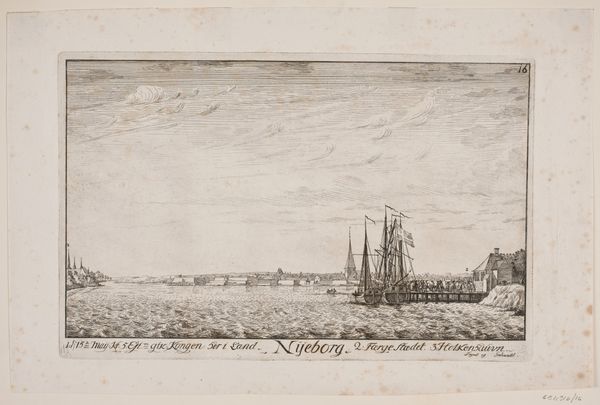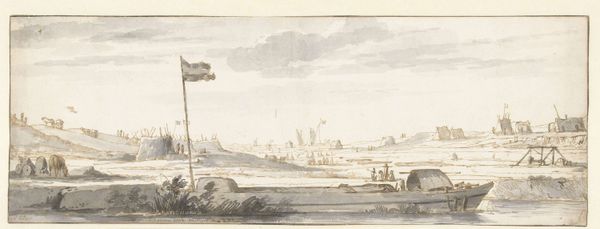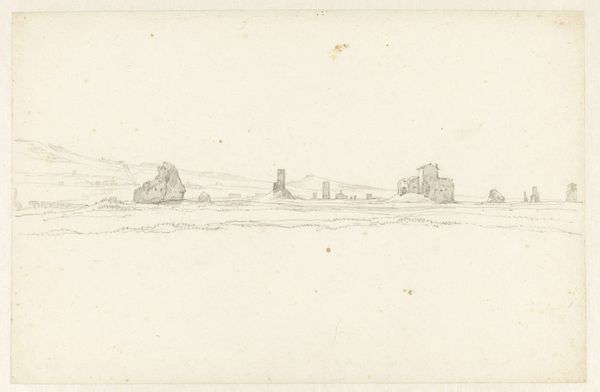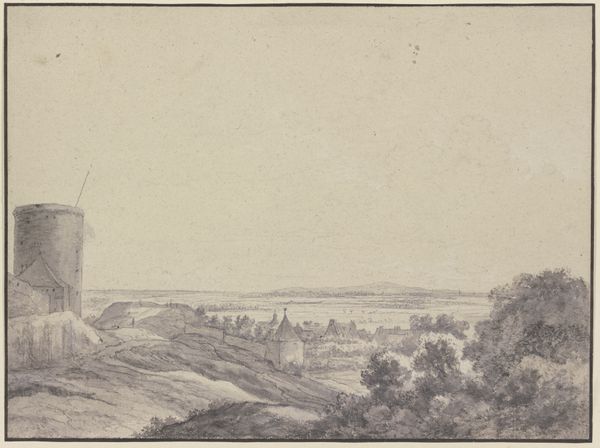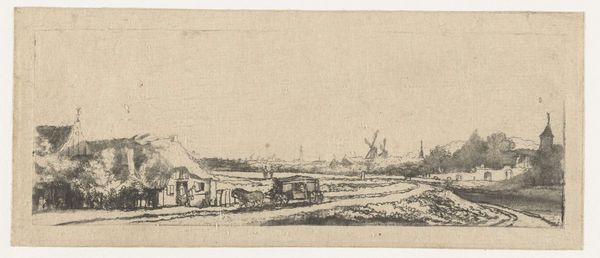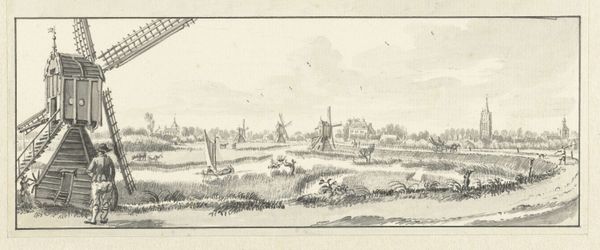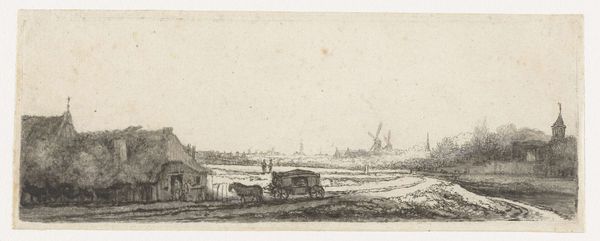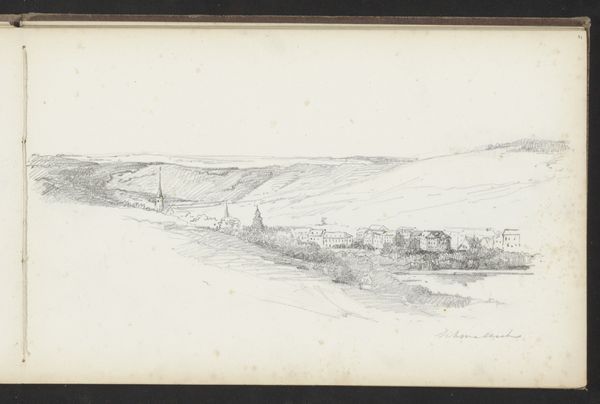
drawing, paper, ink
#
drawing
#
dutch-golden-age
#
pencil sketch
#
landscape
#
paper
#
ink
Dimensions: height 192 mm, width 304 mm
Copyright: Rijks Museum: Open Domain
Curator: Here we have "Polder Landscape," a drawing in ink on paper, attributed to Roelant Roghman and currently residing here at the Rijksmuseum. Editor: It feels melancholic, almost desolate. The subtle grey tones, the way the lines just barely capture the scene… it speaks of transience. Curator: The polder is a powerful symbol, isn't it? Land reclaimed from water. For the Dutch, it embodies perseverance, human ingenuity against the force of nature. Think about what it represents psychologically: the constant striving for stability in an ever-changing world. Editor: And at what cost? We romanticize the "reclaiming," but fail to address the disruption it causes to pre-existing ecosystems, the erasure of a natural state. Look how muted and restrained the composition is. Roghman, perhaps unintentionally, reveals this violence. Where's the vibrancy? Curator: Consider it instead a subtle representation of order. The clean lines of the land divisions. That sense of contained energy. It’s less about outright conquest and more about negotiation, finding harmony. Editor: But harmony for whom? Who benefits from this meticulously crafted order? Historically, polders have been linked to shifting power dynamics, resource control. Look at the tiny figures along the horizon – they appear insignificant in contrast to the landscape’s dominating presence. It whispers about who controls this "harmony." Curator: Still, don’t dismiss the quiet strength implied in the land itself. Notice how it sits stubbornly in the space. Roghman subtly conveys resilience through his restrained use of line. It invites contemplation and honors the land’s enduring character. Editor: Maybe you’re right. Perhaps there is more depth here than my initial reaction suggested. That melancholic tone still resonates but maybe also alludes to collective struggle that reshaped this landscape into a testament of its time. Curator: Precisely. Every line tells a story. Editor: Ultimately it highlights the complexities that shaped it into its present day form.
Comments
No comments
Be the first to comment and join the conversation on the ultimate creative platform.

